Retirement Planning for Your Employees and How it Works

Businesses must understand the importance of Retirement Planning for Your Employees and How it Works. It's more than a financial or legal obligation if they want to retain employees and scale up efficiently. Retirement plans are often the business's lifeblood to retain and motivate employees.
Retirement planning hasn't changed much, but the current generation is faced with different challenges. They need to save and retire in a world where the climate is ever-changing. This article will discuss all the Retirement Planning for Your Employees!
Due to a lengthening of the average life expectancy, people will have to rely on their savings for an extended period. Bond yields are also much lower than they used to be, which means it is difficult to earn high-interest income.
Another factor that may affect interest rates is due to the coronavirus pandemic, which has resulted in many effects on society. It may be hard for people who are counting on a pension, which can be subject to volatility. More and more companies are moving away from a defined benefit pension to a contributory plan.
To get the retirement you've always wanted, follow these steps.
- First, you need to plan your budget and set goals.
- Second, you should choose a specific retirement account.
- Finally, explore all the options available to you and find one that is right for you.
Let's get into more details!
Understand Retirement Planning for Your Employees!
If you're like most business owners, you want to make sure your employees are taken care of after they retire. That's why offering a retirement plan is a great way to attract and retain top talent. But how do retirement plans work?
There are many different types of retirement plans, but they all have one goal: to help employees save for their golden years. The most common type of retirement plan is an employee contribution find. Employees can elect to have a certain percentage of their paycheck withheld and deposited into their accounts.
The money in the account grows tax-deferred, meaning employees don't have to pay taxes on it until they withdraw the funds in retirement. Another popular type of retirement plan is a plan similar to an employee contribution fund but is offered by non-profit organizations.
There are also different plans that state and local governments offer. These plans work the same way as others, but there are different rules regarding how much employees can contribute and when they can access the funds.
No matter what type of retirement plan you offer, it's important to provide employees with information about how.
Why work on your employee's retirement planning?
A retirement plan is a financial arrangement that allows employees to set aside money for their retirement and receive benefits from the company they work for. The company may also contribute to the employee's retirement account.
Retirement planning is important for both the employee and the employer. It ensures that the employee has enough money saved up for retirement and that the employer can retain good employees.
How much do you need to save for retirement?
The hardest part about preparing for retirement is thinking about life as a 70-something. A lot of people get so overwhelmed about saving for an unknown future that they end up not saving anything at all.
Fortunately, planning for retirement is not overly difficult, and you will need a road map that can evolve as time goes on to help keep you on track.
Think in place of your employees
As an employee, you should first think of your goals for retirement. Consider the inflation in prices that may happen in the next decades and plan for increased costs now. It will include your daily expenses like housing costs, food, and health care.
Remember that some expenses you have now because of mortgage or childcare will no longer exist, which can result in an indication decrease in total expenses as you near retirement.
After you've calculated the income you'll receive during retirement, make sure to account for any expenses or income you might get in retirement. Calculating your yearly expenses and income will help inform how much you need to set aside for retirement.
Why should businesses care about employees' retirement plans?
When it comes to retirement planning, there are a lot of factors to consider. But as an employer, one of the most important things you can do is offer a retirement plan to your employees. Here's why:
Attract and retain employees
Offering a retirement plan can help you attract and retain employees. In today's job market, offering a competitive benefits package is essential to attracting and retaining top talent. And when it comes to benefits, a retirement plan is often high on employees' list of priorities.
Ensure your employee's financial wellbeing
Sponsoring a retirement plan can also be a great way to show your employees that you care about their financial wellbeing. By helping them save for retirement, you're not only investing in their future but also the future of your business.
Save taxes
Finally, sponsoring a retirement plan can help you save on taxes. There are a number of tax breaks available for businesses that offer retirement plans to their employees. So not only will you be doing right by your employees, but you'll also be giving your business a boost.
How much will it cost to sponsor a plan for my employees?
The cost of sponsoring a retirement plan for your employees can vary depending on the type of plan you choose and the number of employees you have. However, you can follow some general guidelines to estimate the cost of a retirement plan.
Common types of retirement plans for your business
Normally companies have pre-defined employee retirement plans for adoption. The right plans vary with the business industry, size, employees, and revenue. Let's have a look at common retirement plans:
Defined contribution plans.
Employees contribute a portion of their paychecks, and the taxes on these contributions is not levied until withdrawn from the account. With the vesting period, employers may contribute to the accounts of employees and employment conditions for withdrawal, like working for a certain time at the company.
Pooled Employer Plans (PEP)
They are an easier, lower-risk option for small businesses looking to create contribution plans. A PEP is administered by a Pooled Plan Provider, which can be useful because individual employers typically don't share common interests, such as trade groups.
In addition to being easier and less risky than traditional contribution plans, PEPs also can achieve economies of scale and make them more affordable.
Simple IRA Plan
In addition to a contribution fund, you may want to offer a SIMPLE IRA plan to save for retirement. This option is appropriate for 100 or fewer employees who are paid payroll of $5,000 or more per year. SIMPLE IRAs are easy to set up and maintain. The contribution you provide them is tax-deductible as a business expense, and limits on contributions are higher than that of an IRA.
A SEP IRA is a way to understand your employees with ease. You are responsible for the contributions, and they are vested in employees immediately. It offers tax benefits as well, making it an efficient choice. All employees must be included, and the percentage of contribution should be equal across the board.
Profit-Sharing
One way to help you save for retirement is through profit-sharing. When an employee participates in a profit-sharing plan, their employer will contribute some of their compensation to the plan. To start a program, the company's written form must list how much the employees will make and the procedures of how it works.
What are the tax benefits business can receive?
When it comes to retirement planning, one of the first things employees think about are the tax benefits they may be able to receive. After all, who doesn't want to save money on their taxes?
There are a few different ways that employees can save on their taxes when it comes to retirement planning.
One way is to contribute to a traditional IRA. Employees can deduct their contributions from their taxable income with a traditional IRA. It can result in significant tax savings, especially for those in higher tax brackets.
Another way to save on taxes is to contribute to a Roth IRA. Employees do not get a deduction for their contributions with a Roth IRA, but they do get tax-free withdrawals in retirement. It can be a good option for those who expect to be in a lower tax bracket in retirement.
Finally, employees can also take advantage of employer-sponsored retirement plans. These plans often offer tax breaks for contributions and withdrawals, making them a great option for those looking to save on their taxes.
No matter your financial situation, there are likely some tax benefits that you can take advantage of when it comes to retirement planning.
How to Set Up a Retirement Plan for Employees
The best way to explore and implement retirement plans for employees is to do your homework, work with experts in the field, and educate your workforce about the plan.
Conduct research on all aspects of the retirement plan
Make sure you research companies that provide 401k administration services, including various mutual funds, brokerage firms, and insurance companies. Once you have found a company with excellent customer service, focus on the company that can serve both you and your employees in the long term.
Understand the costs
It's important to understand the costs associated with setting up a retirement plan, such as arranging for employee contributions and handling ongoing administration. You can simplify your retirement plan administration and lower your fiduciary liability with planning.
Discuss Your Legal Obligation
Furthermore, you may want to: Create a plan that allows you to meet your legal obligations. A safe harbour plan, which requires an employer contribution, will pass 401(k) testing when the employee contribution is met.
Bring your employee's retirement plan to automation.
Automatic enrollment simplifies the enrollment process, for instance. When eligible to join the plan, participants are automatically enrolled. Participants have the option to opt-out of participation with automatic enrollment.
Hand over some responsibilities to someone who can do it better than you. You may not be able to manage some aspects of your plan yourself.
3 Ways to Educate Your Employees on the Benefits of Retirement Plans
A retirement plan is only as strong as your marketing and publicity. Be sure to promote your commitment to making it available for employees and a part of your workplace culture.
Give Plan Summary
Provide a plan summary and materials such as email templates to interested applicants. Share these materials at job fairs and individual interviews so that applicants can easily understand the plan's perks.
Share it Online and Offline.
Create a special "save for your future" careers website page that provides a broader picture. Include an easily readable FAQs page that allows job candidates, employees, and other site visitors to quickly research your plan.
Display Financial Benefits
Let employees calculate the financial benefits of saving through a 401(k) by using a retirement calculator. The money that goes into a 401(k) plan is taken from your paycheck before taxes.
It decreases your take-home pay, which in turn decreases the amount of taxes you have to pay. Not all of the money put into a 401(k) will accrue for years since you'll pay taxes on it when you withdraw during retirement.
Conclusion
People often do not realize how important retirement planning is. One of the most important factors to consider when deciding how much money will be needed for retirement is the company's offered retirement plan.
Start saving for retirement now rather than today. The sooner you start funding a retirement plan, the better your chances of having a comfortable lifestyle when you retire. After reading this article, you should have a better understanding of how to manage your finances and make your business employee's retirement plans.
Now you know all about Retirement Planning for Your Employees and How it Works! So have you created your business employee's retirements plans? What challenges did you face? Share with us in the comments section below.
Do you feel like you are struggling with putting "strategy" and "business growth concepts" in place that make a difference? Doing it all is overwhelming! Let’s have a honest discussion about your business and see if the Power of 10 can help you. Click “HERE” to have a great conversation with our team today.
Written and Published By The Strategic Advisor Board Team
C. 2017-2021 Strategic Advisor Board / M&C All Rights Reserved
www.strategicadvisorboard.com / info@strategicadvisorboard.com











